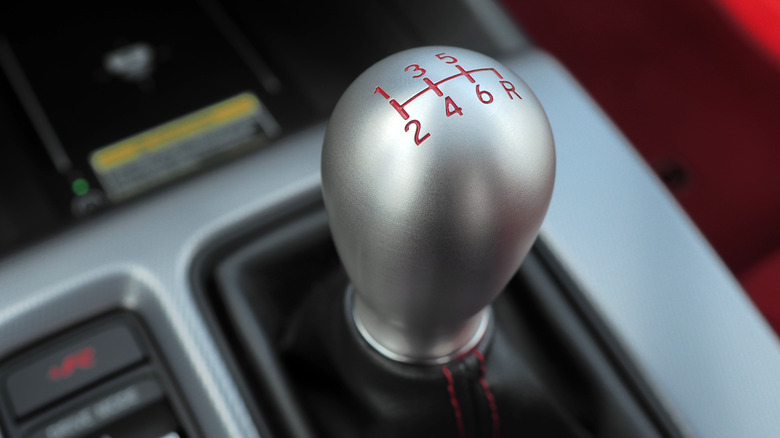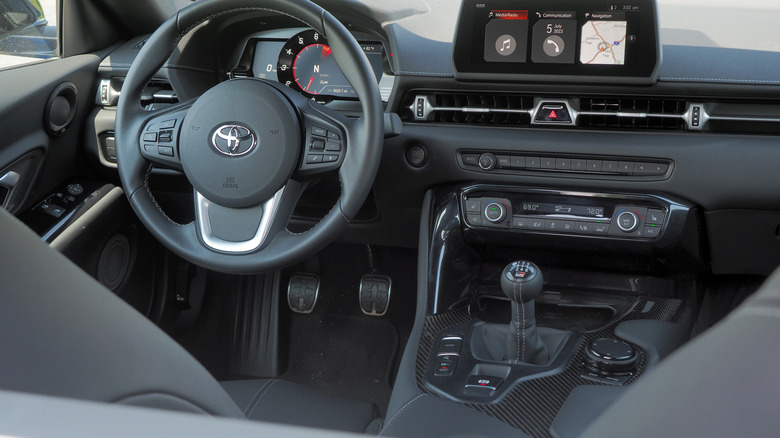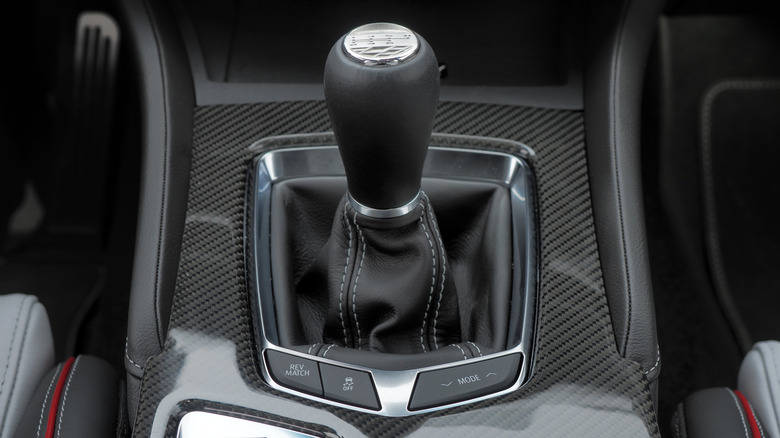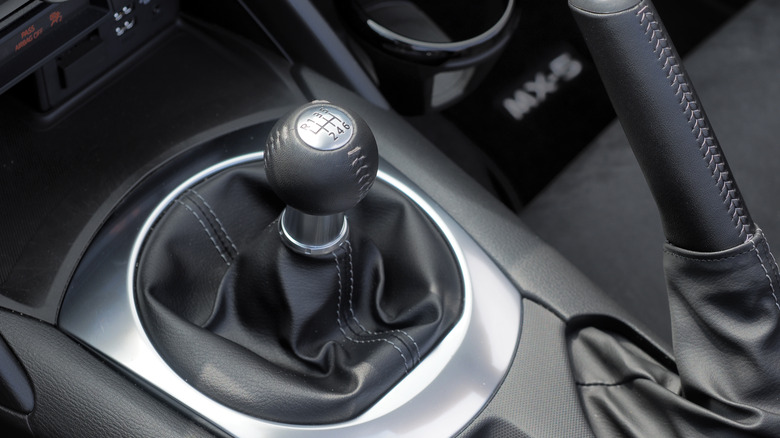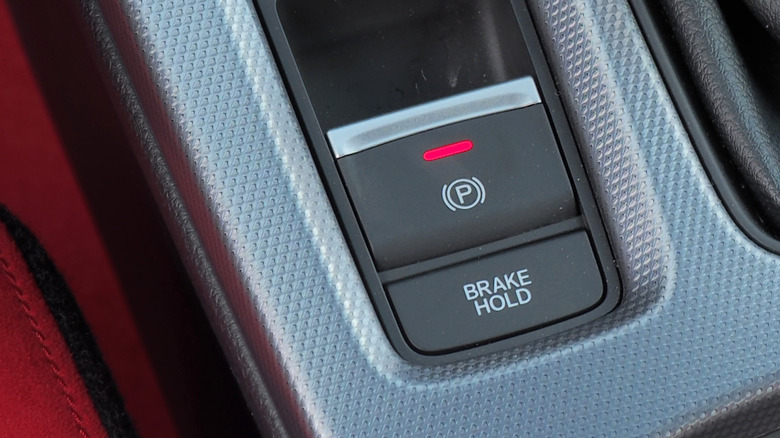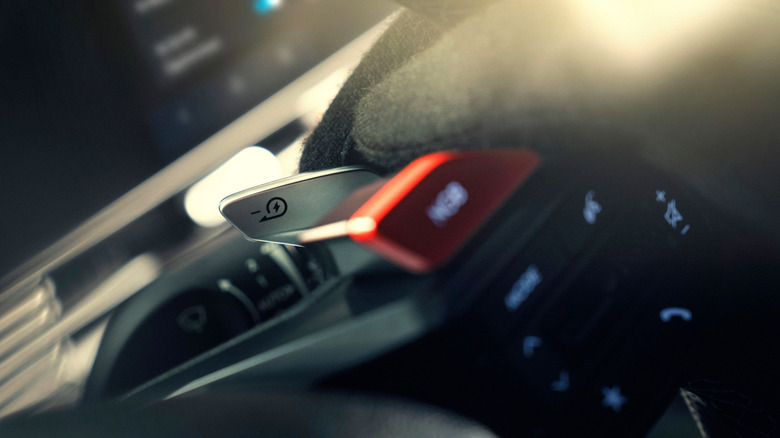5 Ways Driving Stick Shift Transmissions Has Been Made Easier With Modern Cars
Saving the manual transmission needn't mean staying stuck in the past, and car companies promising engagement above all else have dug deep to pair performance with the sort of involvement only three pedals can deliver. Long gone are the days when sports cars with manual gearboxes were faster than their automatic counterparts. Those who want the fastest lap times know that modern, high-performance automatic transmissions can shift gears far faster than a human might.
What's perfect for track days isn't necessarily what's best for enthusiasts, however, and there's more to enjoying life from behind the wheel than robotic efficiency. By adding some clever tech to the old-school stick, automakers have figured out how to please purists while also making manual transmission cars easier than ever to live with.
Whether your lingering memory of manuals is the old clunker you learned to drive in, finicky sports cars that seem determined to embarrass you at every stop light, or just a process that seems more hassle than its worth, the latest breed of stick shifts could come as a revelation.
Good manual transmissions are make-or-break for performance cars
On the one hand, the dwindling number of new cars available with a manual transmission option is a nightmare for keen drivers. At the same time, though, the elevation of the stick shift to enthusiast catnip has forced automakers to put their best foot forward. The cream rises to the top, after all, and that means some genuinely great-feeling manuals are out there for the picking – and without breaking the bank in the process.
Mazda's MX-5 Miata has long been the attainable benchmark for three-pedal fans, but it's no longer alone there. Whether it's the sublime shifter in the Honda Civic Type R, the glee-inducing manual in Toyota's GR Corolla, or the astonishingly affordable stick option for the Hyundai Elantra N, the spoils of this greater focus on not just offering alternatives to automatics but really good alternatives pays serious dividends.
There's the sense, too, that automakers with ambitions to acquire eager drivers are willing to go to the engineering effort involved with manual cars. The addition of a (very good) six-speed manual in the BMW Z4 and Toyota Supra, for instance, suggests car companies aren't entirely deaf to third-pedal demands, even if they're also choosing to pair them with a whole new breed of clever technology.
Auto Rev-Match skips right over heel-and-toe
Skilled drivers know the secret to the smoothest, fastest manual downshift is heel-and-toe: a judiciously timed stab of the accelerator pedal with the heel of your right foot while simultaneously tapping the brake with your toes. That way, you can match a higher engine speed to the lower gear, making the transition smoother and also ensuring the car stays in the most potent point of the engine's power band. Like any skill, though, heel-and-toe driving can be tricky to learn, never mind perfect.
Some automakers have responded with automatic rev-matching, offering the benefit of heel-and-toe driving but with a little electronic assistance. Effectively, when you hit the clutch pedal, the car decides — from shifter position, current engine speed, and other factors — whether you intend to upshift or downshift. It then automatically gives the gas a blip to match the engine speed.
The upshot in cars like the Cadillac CT4-V Blackwing is a smoother, punchier transition between the gears, particularly useful when slowing for — and then accelerating out of — a corner. The downside (and the reason you might want to turn Auto Rev-Match off) can be an overenthusiastic system blipping the gas whenever you downshift, which can leave you looking like an attention-seeker at the traffic lights.
No-Lift Shift is fast (just get the right pedal)
The way we're taught it, manual gear changes are deceptively simple: lift off the gas, depress the clutch, change the gear, and lift off the clutch as you press the accelerator again. How much more efficient — particularly on a track — if you could avoid lifting off the gas altogether, though? That's where no-lift shift comes in, though it's worth understanding how it works before you make an inadvertent (and potentially very expensive) mistake with your feet.
In a no-lift shift car, you can hit the clutch pedal with your left foot and change gear without lifting your right foot off the accelerator during that process. In the background, the vehicle automatically manages the split-second throttle cut as the gears change. The upshot is you're not interrupting the power delivery of the engine, helping avoid a slow-down while you shift.
It's definitely worth remembering that while a no-lift shift allows you to ignore the gas pedal, you absolutely do still have to use the clutch: slamming the shifter between gears without hitting the clutch first is a shortcut to pricy repairs. Not every gearshift will trigger the system, either. Typically, you have to be driving aggressively to begin with, sometimes in certain sportier drive modes and when at high engine speeds with the accelerator pressed significantly.
Auto Brake Hold and e-brake ends rolling embarassment
Two feet, three pedals. If you're new to the world of stick-shift cars, you'd be forgiven for wondering how you're meant to elegantly navigate between the extra pedal down in the driver's footwell and the brake and accelerator. Particularly when it comes to feathering those pedals to keep the car stationary at a stop sign or — worse still — on a hill without stalling the engine.
The steady transition from physical parking brakes to electronic, or e-brake, versions can help, there. Pulling the manual handbrake to hold a stick shift car in place isn't new. Still, some cars now offer that at the push of an electronic button or — with Auto Brake Hold like in the Honda Civic Type R, another increasingly common feature — even to apply the brake automatically when you stop. That can definitely help assuage some fears around rolling forward or backward.
The advantage of the electronic handbrake is that it typically automatically disengages when you lift off the clutch and hit the gas again. That's one less thing to think about when you're trying to make a clean getaway from the lights, particularly if you're on a hill and don't want to roll back as you shift from brake to clutch.
EVs can have stick shifts, too
Despite what you might think, electric cars have gearboxes: some, like Porsche's Taycan, even have more than one gear. Yet the linear power delivery of an EV is very different from what we're used to from internal combustion vehicles, with gearing handled in the background in the name of maximizing torque from electric motor to wheels. That hasn't stopped some automakers from experimenting with putting old-school sticks into their thoroughly new EVs, mind.
Hyundai and Toyota have led the way here, including making the argument for why you'd want a manual electric car. After all, there's no justification in sheer performance terms: introducing multiple, driver-controlled gears will actually make a fast EV a little slower overall. Instead, the reason is driver engagement, and — given sports car enthusiasts' mistrust about whether an electric vehicle can ever deliver the same experience — they might be on to something.
In Hyundai's case, its e-shift system in the Ioniq 5 N uses steering wheel paddles to step through a virtual eight-speed dual-clutch automatic transmission, like the sort fitted to its performance gas cars. That includes simulated gear change jerks, rev-matching, and shifts in the electronic soundtrack. While it might sound gimmicky, we had a quick try, and it turned out to be mighty good fun.
Toyota takes it even further with a stick shift and a clutch pedal in its prototype system. Switched on, you row between six "manual" gears while hitting the third pedal accordingly, complete with virtual engine sounds, a faux rev-limiter, and even the ability to judder and stall if you get the ratio wrong. Currently, Toyota says the system is just a prototype, though given the ongoing chatter of an EV GR sports car in development, we're not counting anything out.
